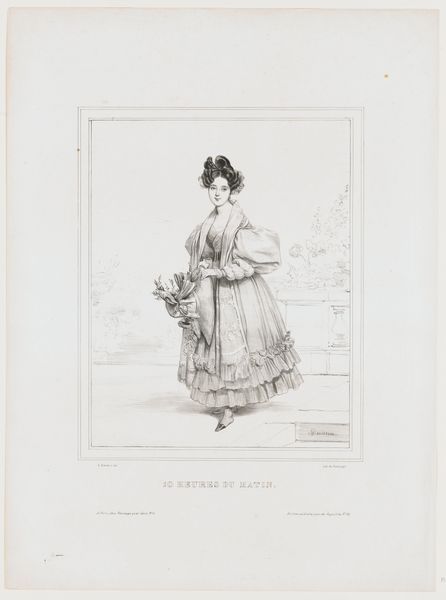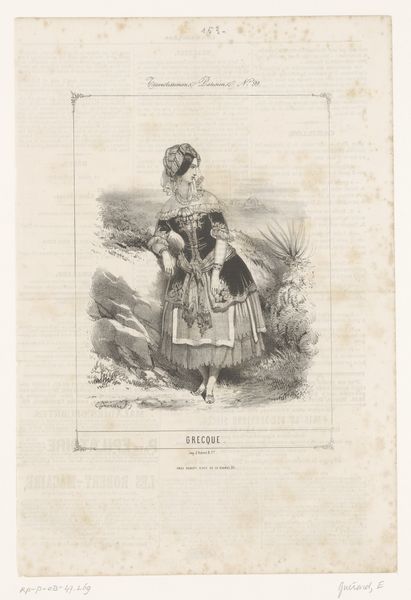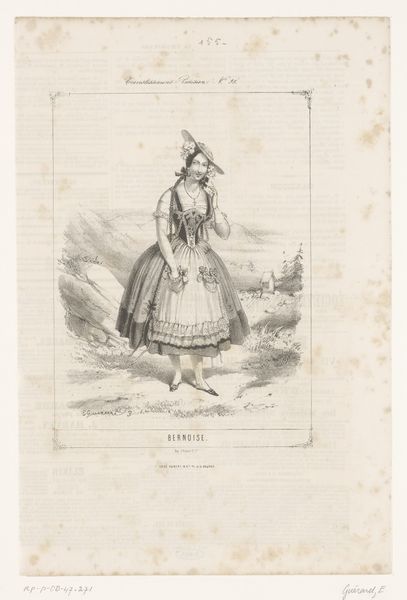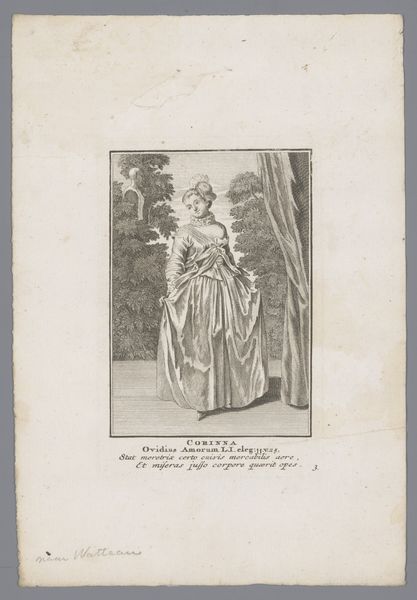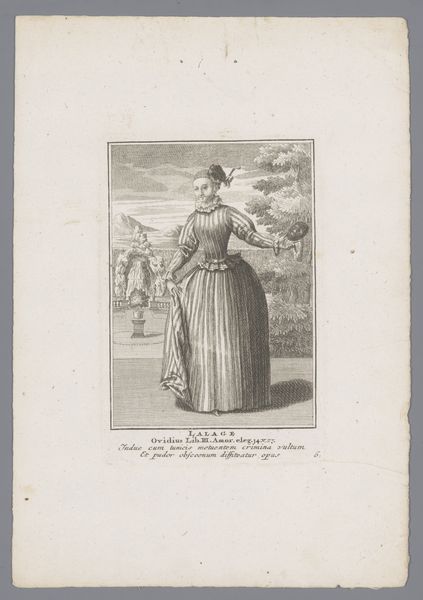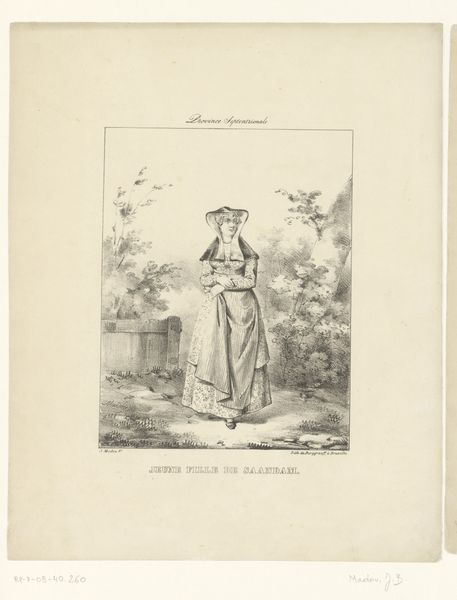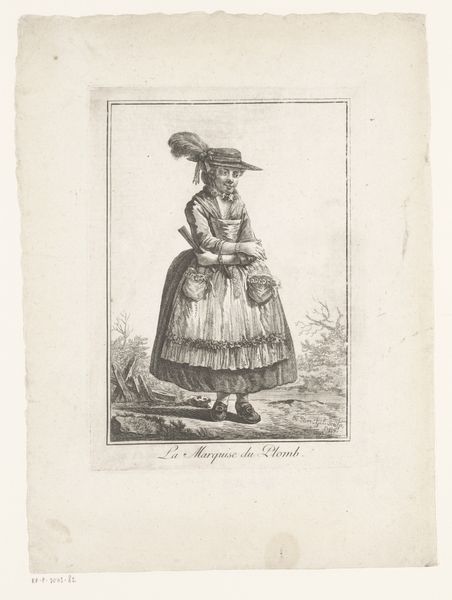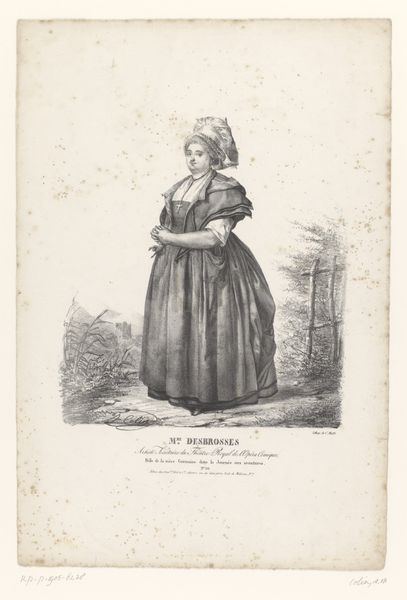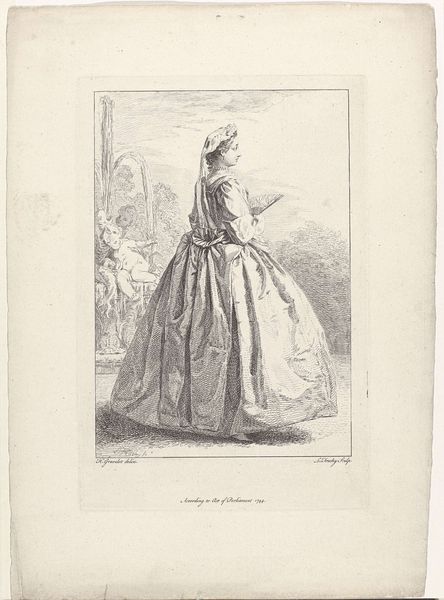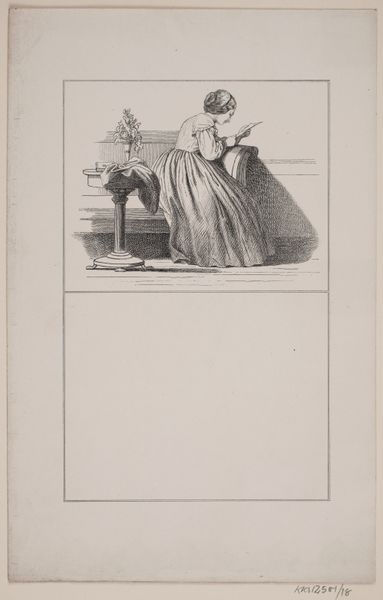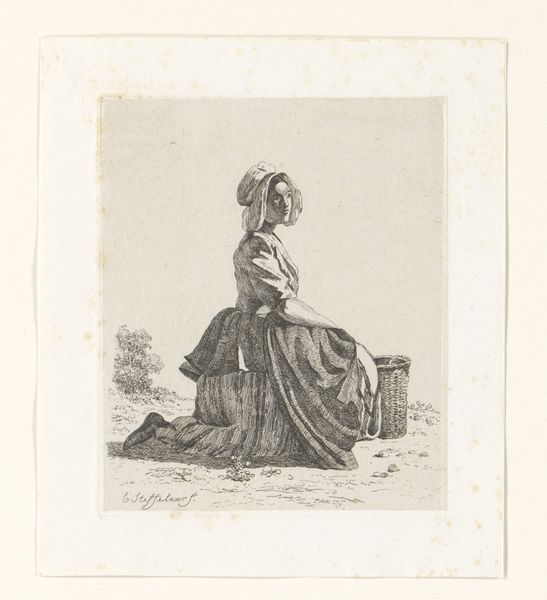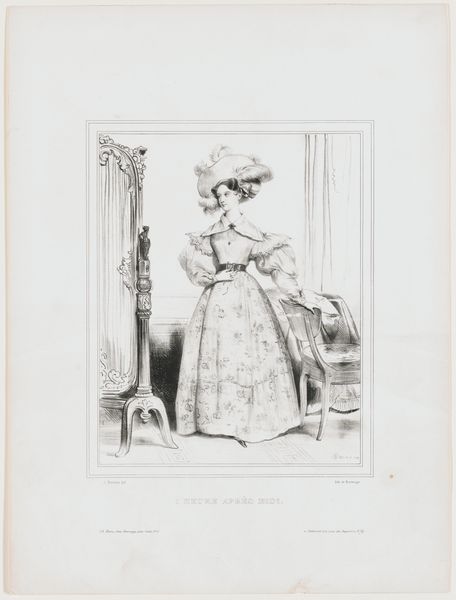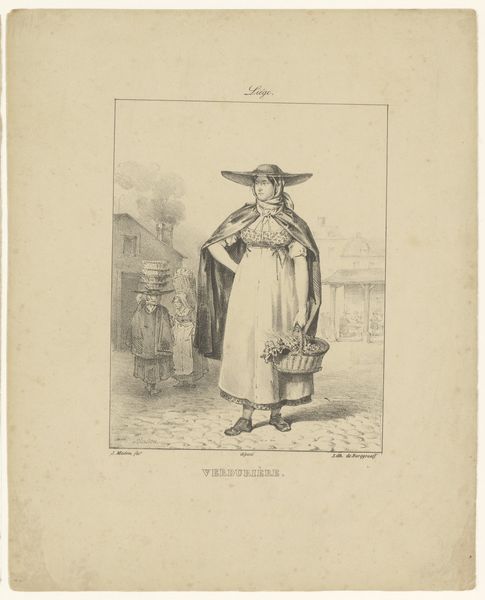
drawing, paper, pen
#
portrait
#
drawing
#
dog
#
paper
#
folk-art
#
romanticism
#
pen
#
genre-painting
#
realism
Dimensions: height 339 mm, width 275 mm
Copyright: Rijks Museum: Open Domain
Curator: Today we’re observing Jean-Baptiste Madou’s pen drawing on paper, created sometime between 1825 and 1835. It's titled "Vrouw uit Zuid-Beveland met mand en hond", or "Woman from Zuid-Beveland with basket and dog." Editor: There's a stark simplicity to the composition. It evokes a sense of quiet rural life and a connection to the land, rendered with a remarkable sense of clarity, despite its muted palette. Curator: It’s a striking depiction of rural labor, capturing a moment of daily life. Note the detail in the woman's dress and the wicker basket; the artist takes care to show us not just the person, but also her role and her labor in society. Editor: The use of line is exceptional, creating volume and texture. The way the light falls across the folds of her apron is masterful. There's a certain idealism, even romanticism in how the woman is presented; see the classic rural motif underscored by the canine companion. Curator: The dog is a lovely detail; clearly a working dog as well. The basket could very well be containing harvested goods from the fields, meant for processing or sale. Madou situates this woman within the larger economic system of the time. Editor: I find the artist’s rendering of shadow around her feet grounds the woman in the scene while contributing to its overall serenity. Even the somewhat severe lines of the fence behind seem intentionally balanced by softer elements in the distance, and of course, the figures themselves. Curator: Precisely, it blends aspects of realism with a nod to romantic ideals about rural life. By representing this specific costume, it creates an ethnographic document of the clothes produced, consumed and worn by working women. Editor: Ultimately, Madou achieves an equilibrium in the relationships among his subject, forms, textures and lines, giving rise to a contemplative and formally intriguing experience. Curator: Absolutely. Looking closer at Madou’s materials brings attention to how everyday life gets valued through art and representation, offering a lens to understanding social fabric from nearly two centuries ago. Editor: An evocative moment captured forever by a delicate hand.
Comments
No comments
Be the first to comment and join the conversation on the ultimate creative platform.
